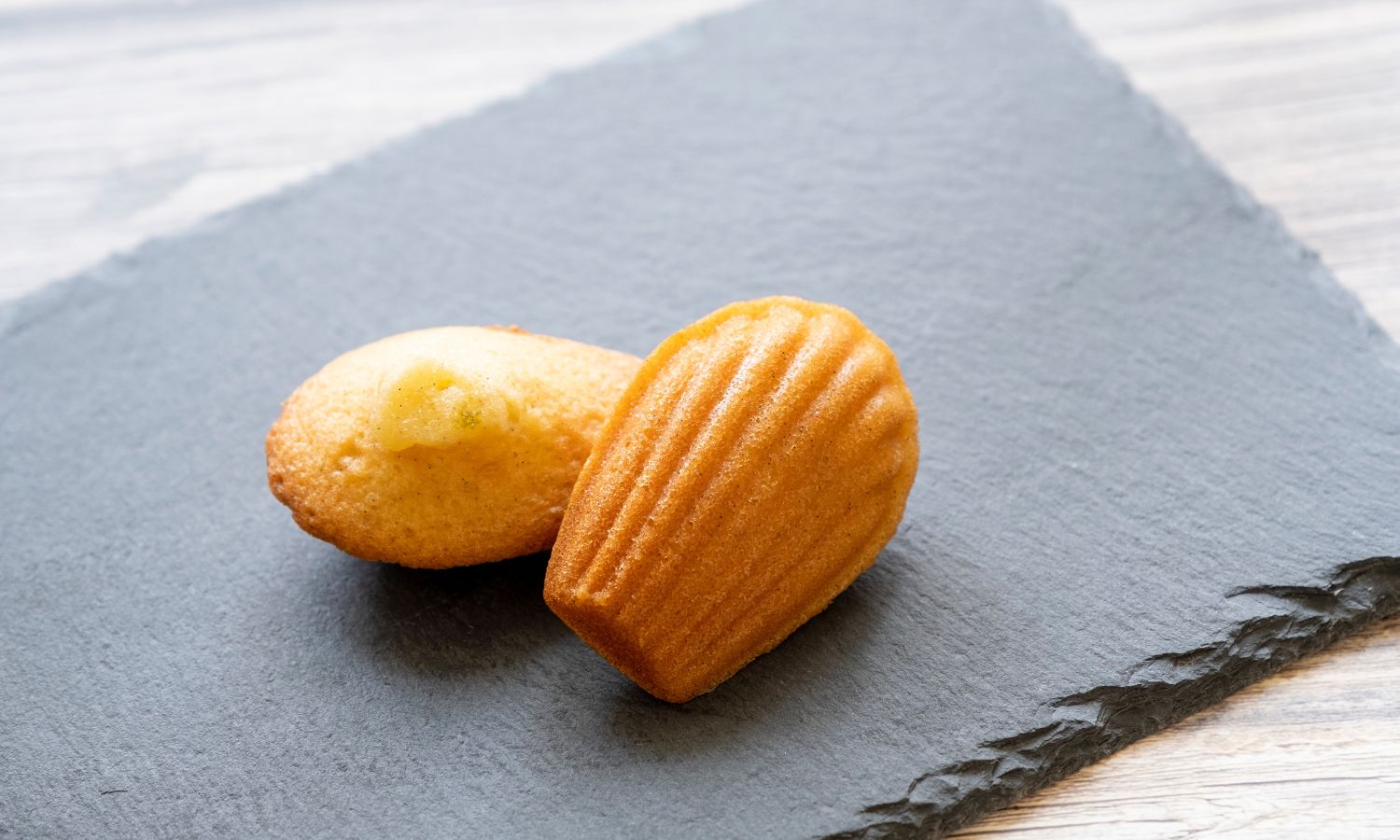by Sangeeta Kocharekar URL Copied! The buttery crunch of a croissant. The delicate sweetness of a macaron. The velvety texture inside a pain au chocolat.
French pastries are known for their rich history, blending of flavours and exquisite craftsmanship. But do you know all of them? A religieuse, financier and kouign-amann? If not, you could be missing out. I tapped four French chefs and an Australian chef specialising in French baking for their takes on the French pastries everyone should know (and taste!).

How are they made, how do you eat them and where are the best places to find them. Here’s what the chefs said. var VMDAdsTheLatch = window.
VMDAdsTheLatch || {}; var gptAdSlots = window.gptAdSlots || {}; googletag.cmd.
push(function() { var slot_teads = googletag.defineSlot('/22219324693/thelatch/teads', [1, 1],'gam_teads') .setTargeting('pos', 'teads') .
addService(googletag.pubads()); googletag.display('gam_teads'); gptAdSlots['gam_teads'] = slot_teads; VMDAdsTheLatch.
addHeaderBiddingSlot(slot_teads); }); Madeleine A madeleine is a small butter cake, baked in a special tin or mould and often decorated with coconut and jam. Technically it’s a cake but because of its shape and size, it’s sometimes called a cookie. The very best of The Latch delivered straight to your inbox.
“It’s a dainty, shell-shaped cake infused with the subtle fragrance of citron and butter,” says Vincent Chagnaud, French chef and founder of Le Private Chef Sydney . “It’s tender, almost ethereal, with a delicate crumb that melts on your tongue, perfect for a French afternoon tea.” Juliette Coudreau, French demi chef at Mimi’s , describes it as a pretty pastry but says she hasn’t seen it often in Australian bakeries.
The bakery where she’s tasted the best madeleine is Sacrebleu! , a French pastry shop in Dee Why and Crown Sydney in Barangaroo. You can also find them at Petermen Dining in St Leonards where they’re baked into an oyster shell. Image: Getty Images Financier Like a madeleine, a financier is a classic French tea cake.
It’s the size of a madeleine but rectangular and made with brown butter, egg whites, sugar, all-purpose flour and almond flour. It was invented by the nuns of the Order of Visitation in the 17 th century . “It’s delicate and moist,” says Francois Morabito, French chef and founder of food tour company My French Voyage .
“I’ve never seen it in Australia.” Chagnaud describes a financier as crisp at the edges and tender within. “With each bite, the deep, buttery notes of browned beurre noisette mingle with the delicate sweetness of almonds, evoking the charm of a Parisian patisserie,” he says.
It’s best enjoyed alongside an espresso, says Arthur Carré, French sous chef at Mimi’s. Image: Getty Images Pain au Chocolat A pain au chocolat uses croissant dough and follows the same recipe but with chocolate sticks inside and shaped into a rectangle. It’s best served still warm from the oven.
It’s also called “chocolatine” in southwest France. It’s the most common viennoiserie outside a traditional croissant, says Brendon Woodward, Australian head baker of Loulou Boulangerie and Traiteur . His pick for where to eat it? Sydney’s AP Bakery bakes twists on the classic pain au chocolat with roasted buckwheat through the dough.
Carré also vouches for AP Bakery. “The breakfast of my childhood, always accompanied by a hot chocolate,” Carré says. Chagnaud adds: “Pain au chocolate captures the essence of French indulgence.
” Image: Getty Images Kouign-amann A kouign-amann (pronounced “queen-a-mahn”) is a pastry cake made with dough, sugar and butter. It originated in Brittany, France and in Breton, a Celtic language spoken in the region, its name translates to “butter cake”. Morabito says it’s crispy and caramelised.
“A croissant dough traditionally laminated with sugar between the layers to give a rich pastry,” says Woodward. He recommends trying its variations at Agnes , a bakery in Brisbane. Coudreau recommends trying it at AP Bakery in Sydney.
“It’s not a healthy pastry but so generous,” she says. “It’s a pastry puff with more butter and more sugar.” Image: Getty Images Religieuse A religieuse is made with a small choux pastry case stacked on top of a larger one, both filled with crème patissiere.
Choux pastry, or pâte à choux, is a delicate pastry dough made with butter, water, flour and eggs. Instead of a raising agent, it uses its high moisture content to create steam that once evaporated, results in the pastry puffing. “The name, meaning ‘nun’ in French, reflects its elegant, layered appearance as well as its indulgent nature,” says Chagnaud.
“It’s a true expression of French patisserie artistry.” Carré describes it as a more indulgent version of the éclair and says the two stacked pastries are often finished with a buttercream frosting. One of the best religieuse he’s ever tasted is at Madame and Yves in Sydney’s Clovelly.
Image: Getty Images Profiterole A profiterole is a choux pastry the size of a ping pong ball. It’s filled with cream or custard and covered with chocolate sauce. Morabito says the traditional recipe has the puff filled with cold vanilla ice cream.
“Be careful, I’ve rarely found someone in Australia [making] profiterole [using] the correct recipe,” he says. “What most Australians call profiterole should be named simply ‘choux a la crème’.” You can find some of the best of it at Chu Bakery in Perth where they rotate flavours and at Mimi’s, which also serves a croquembouche, a Christmas tree-shaped tower of choux pastry puffs.
“The crisp shell contrasts beautifully with the creamy interior, making it a classic indulgence that transports you to a chic Parisian café,” says Chagnaud. Image: Getty Images Mille-feuille Also called “napoleon”, “vanilla slice” or “custard slice”, a mille-feuille is made of three layers of puff pastry with cream or custard in between them. Its name translates to “thousand sheets” in French.
“It’s as delicate as it is decadent,” says Chagnaud. “The top is often adorned with a feathered glaze, a touch of elegance that makes this classic treat as much a feast for the eyes as for the palate.” If you’re making it at home, Woodward suggests you dust the pastry sheets with icing sugar towards the end of baking to caramelise the crust.
“This dessert should not be served in a pastry shop but only made at the last minute at home or in a restaurant, so it keeps the crispiness which is important for this treat,” Morabito says. Image: Getty Images Petit Four In French, petit four translates to “small oven”. It’s also called “mignardises” in plural form.
It’s a bite-size confectionary or savoury appetiser. It’s made with sponge cake, enrobed in fondant and usually topped with décor. “Whether it’s a layered cake, glazed fruit tart or chocolate-dipped delight, each petit four is a refined and elegant treat, often enjoyed with a café or glass of champagne,” says Chagnaud.
“Each bite-sized morsel is a blend of flavours and textures.” Image: Getty Images Beignet Beignets are deep-fried, donut-like pastries in a square or ball shape. They’re made with choux pastry and topped with powdered sugar.
Many beignets have excess moisture in the dough which, when fried, busts into steam so it puffs out. Others are filled with jam. Though they originated in France, they’ve since become a staple at eateries in New Orleans.
“Each region of France pretty much has a different version of beignet,” says Morabito. Image: Getty Images Macaron A macaron, not to be confused with a macaroon, is a sandwich-like cookie, often made with almond flour and filled with jam, ganache or buttercream. A macaroon, on the other hand, is a drop cooking made using shredded coconut.
“Two pastel-hued almond meringue shells enclose a smooth, rich ganache or butter cream,” says Chagnuad. “As you savour it, the crisp exterior gives way to a tender, chewy interior, a symphony of textures and refined flavours.” Woodward says he’s long been a fan of Adriano Zumbo ’s macarons so suggests visiting QT Sydney where they’re served to try them.
When Carré was growing up, macarons were something given or enjoyed on special occasions, especially those from Ladurée , the Parisian-born brand that popularised them. “It’s a comforting treat made of two macaron shells with a delicious ganache filling,” Carré says. Image: Getty Images Related: Chicken Schnitty Aside, Australia Doesn’t Have Much German Food Related: Australian Restaurants Are Saying Benvenuta to This Italian Dessert Read more stories from The Latch and subscribe to our email newsletter .
Tags: Food , France , French.



















